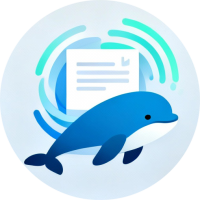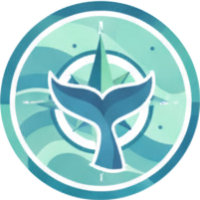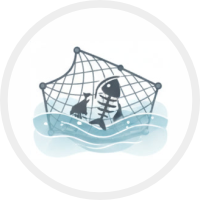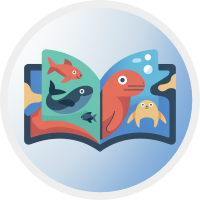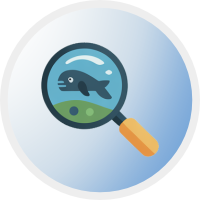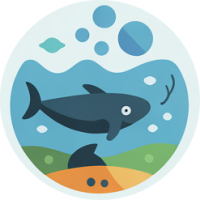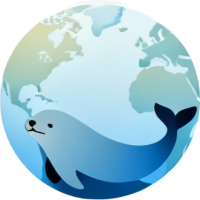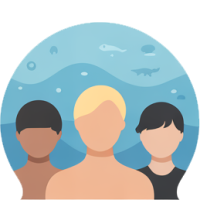About the project

Project goal:
The project aims to popularize knowledge about marine mammals and their habitat, engage people in observing and collecting data on marine mammals and sea pollution, and foster a conservation-minded attitude towards the ocean and its wildlife.
One of the main objectives of the project is to create an information-analytical database for inputting, systematizing, analyzing, and storing detailed information about sightings of marine mammals and encounters of marine debris. The uploaded data are visualized on a map of sightings. The project is implemented by the marine animal assistance group «Friends of the Ocean» in collaboration with the Kronotsky State Nature Reserve, Dr. V.N. Burkanov, Dr. I.S. Trukhanova, Dr. S.D. Ryazanov, Y.S. Altukhova, P.E. Titov, with the participation of EcoStart LLC and with the support of the All-Russian Public Organization «Russian Geographical Society».
Functionality Description:
In the Data Management section, users can filter data and choose the method of visualization — in tabular format or on a map. By clicking on the icons displayed on the map, users can see the details of the selected sighting. Reports of sightings of live or dead marine mammals or cases of sea pollution, such as fishing gear, nets, synthetic and other debris, oil products, can be made in the personal account on this website or using the mobile application «Зачекинь кита и Ко.» («Check-in Whale and Co.»). The mobile application also accepts data in offline mode and can be downloaded for free from the Google Play and App Store.
Data entry instructions for sightings of marine mammals and encounters of environmental pollution are posted in the Data Entry Instructions section.
The website and the mobile application contain marine mammal identification guide that helps users identify the animals they encounter. In the mobile application catalog, users will find interesting and useful information about all marine mammals found in Russia. They will learn about their appearance, distinctive features, diet, hunting habits, habitat, population size, and conservation status. Additionally, users can listen to the sounds of some of these animals.
The Recommendations for Observation section provides guidelines for observing marine mammals and providing assistance if necessary.
Why we collect data:

Live Marine Mammals
Marine mammals are often encountered near the shore, near settlements, or even on urban beaches. If the animal appears healthy, moves freely or rests, and shows no visible injuries, then it is likely not in danger. Observations can be made from a distance (no closer than 100 meters), the animals may be photographed without disturbing them, and the sighting can be reported using the provided form.
Reports of marine mammals sightings help specialists refine their distribution areas, migration routes, and timings, providing valuable information for estimating their numbers and the status of local populations and individuals.
Each registered marine mammal sighting helps determine the routes and timing of seasonal migrations of these animals, areas where they prefer to feed or rest. Sometimes rare species, which were not previously observed in a particular region or were considered extinct from the fauna, could be sighted accidentally. Such unique observations, which any attentive resident of the region can make, make a significant contribution to the research and conservation of rare species, many of which are endangered.
In some cases, marine mammals may be encountered in an atypical habitat for them. For example, young, inexperienced animals may accidentally swim or be carried on ice floes to the territory of port facilities, marine terminals, or end up on the shore, away from the water, surrounded by stray dogs. Such animals are in a dangerous situation and may need assistance. Reporting such sightings to marine mammal specialists working in your region is extremely important.

Dead Marine Mammals
Marine mammals are a crucial link in marine and oceanic ecosystems and are necessary for their normal functioning. Unfortunately, the causes of marine mammal deaths are not always natural. Despite the fact that commercial whaling has not been conducted in Russia for over 35 years, many species of marine mammals have small populations and are listed in the Red Data Book of the Russian Federation. They are still impacted by many threats associated with human activities. Among the anthropogenic causes of marine mammal mortality, are entanglement in fishing gear (nets, trawl remnants, lines, etc.), ship strikes, ingestion of debris, including plastic, death due to ocean pollution by oil products, chemicals, or radioactive waste.
Dead marine mammals are often found on shore or near the coast. Information about them is extremely important for specialists. It helps to collect data on animal mortality, assess its magnitude, identify specific causes of death, and determine potential threats to the animals. Information about where, when, and under what circumstances dead animals were found helps to develop and implement measures to conserve and prevent the mortality of marine mammals in the future.
If you find a dead marine mammal, please report it using the provided form.

Oil Spills
In Russia, and especially in our Far Eastern «oil-producing» region, the problem of oil leaks and spills is very relevant. The entire marine ecosystem suffers from spilled oil.
Covering the sea surface with a thin film, oil prevents water from evaporating and saturating with oxygen, entering the gills of fish, oil disrupts their respiratory system.
As a result, both fish and roe die, and surviving roe produce fish with genetic mutations. Oil also harms marine birds — when it gets on their feathers, oil deprives them of their water-repellent properties, and the bird starts to get wet and freeze. If the bird attempts to clean its feathers with its beak, some oil may get in their stomach, causing intoxication. As a result, the bird dies from cold or poisoning.
Marine mammals also suffer from oil spills. Oil affects the fur of polar bears, sea lions, and seals just like it affects the feathers of birds. The skin and eyes of cetaceans are sensitive to the toxic effects of oil.
If you encounter oil spills and oil products at sea, please report them using the provided form. This information will help respond to the pollution in timely manner.

«Ghost Nets»
«Ghost nets» are freely floating and/or snagged on the seabed, torn away by storms, accidentally lost, or discarded fishing gear or their remnants (nets, ropes, etc.). No longer serving humans, they cause great harm to the ocean, posing a serious threat to wildlife. Nets pose a huge danger to large whales, dolphins, and seals. Entangled in them, animals can drown immediately, or for months and even years carry these deadly snares on themselves or drag them along.
If you encounter «ghost nets» at sea, report them using the provided form. If possible, try to lift them out of the water and bring them ashore for disposal or recycling.

Anthropogenic litter
Currently, the seas and oceans of our planet are polluted with enormous amounts of plastic waste. Not only islands, but whole continents could also be created from it! Plastic waste in seas and oceans poses a serious threat to the health and life of marine animals and humans. Every year, around the world, about one hundred thousand marine mammals and more than a million seabirds die from plastic waste.
Birds mistake plastic waste for food, but they cannot digest it, so after eating plastic, they slowly and painfully die from poisoning or starvation. Birds get entangled in polyethylene bags and plastic rings, which eventually leads to suffocation or exhaustion.
Cetaceans swallow plastic with food, and it clogs their digestive tract, leading to their slow and painful death.
Seals often become victims of packaging straps, the rings of which they accidentally put around their necks in the sea. As they grow, the packaging ring gets stuck on their neck, cutting into their growing body and leading to inevitable death.
Even for humans, pollution of the world’s oceans with plastic presents a threat. Plastic thrown into the sea absorbs toxic substances dissolved in water. Fish eat decomposing, toxin-soaked plastic, mistaking it for plankton. Thus, toxic substances enter the food chain, and their concentration in living organisms increases as they move up the food chain — from small fish to large ones. Thus, the plastic thrown into the ocean comes back to us on a plate.
If you encounter large amounts of garbage at sea or on the coast, please report them it using the provided form. This information will help specialists analyze the nature and origin of the garbage, determine its impact on marine ecosystems, and identify measures necessary to reduce the level of sea pollution. If you have the opportunity, collect the garbage and dispose of it properly.

